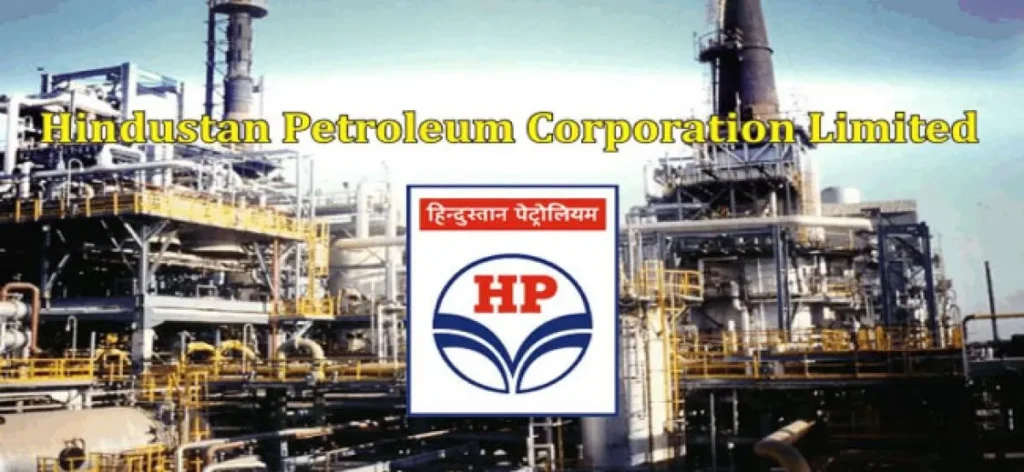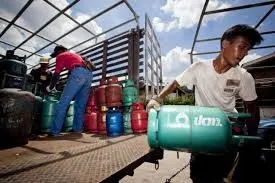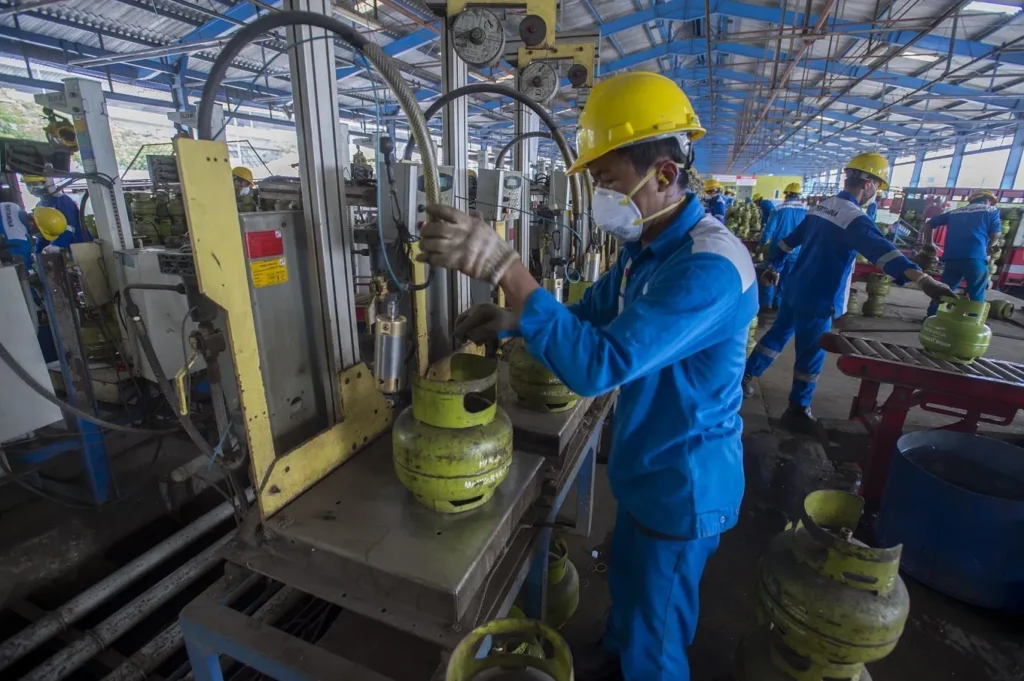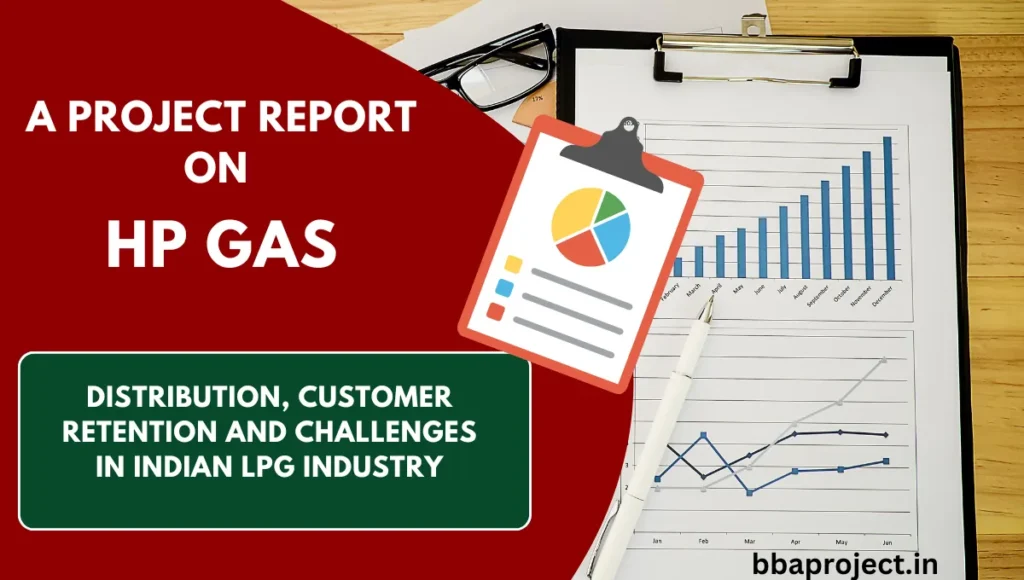Welcome to this detailed project report on HP Gas, a key player in India’s Liquefied Petroleum Gas (LPG) industry, brought to you as part of your educational journey. This report focuses on HP Gas, a brand under Hindustan Petroleum Corporation Limited (HPCL), and explores the LPG business in India. You’ll dive into how the market works, how LPG is distributed, the challenges faced, and the strategies HPCL uses to stay competitive. This is a great chance to learn about a vital energy sector and see how a big company manages an essential product like LPG.
Summary of Project Report on HP Gas
Introduction
LPG is a big deal in India—it’s the go-to fuel for cooking and heating in millions of homes. This report zooms in on HP Gas, studying how it gets to customers in urban and rural areas. We’ll cover the basics of LPG, the supply-demand balance, and the main companies in the game. The market splits into three parts: Domestic (homes), Commercial (restaurants, hotels), and Industrial (factories). A big issue? Some domestic cylinders get misused in commercial settings. Educating people—dealers and users alike—is key to fixing this.
Objective of the Study of Project Report on HP Gas
The primary objective of this project is to develop strategies for sustainable competitive growth by increasing HP Gas’s market penetration in urban and rural markets. This involves analyzing market potential and formulating actionable plans.
About HPCL
Hindustan Petroleum Corporation Limited (HPCL) is a Government of India Enterprise and a Fortune Global 500 and Forbes 2000 Company. HPCL commands a 20.19% marketing share among Public Sector Oil Marketing Companies (OMCs) in India and boasts a robust market infrastructure.

HPCL’s extensive marketing network comprises 13 Zonal offices in major cities and 101 Regional offices. The company’s supply and distribution infrastructure includes Terminals, Inland Relay Depots, Retail Outlets, Aviation Fuel Stations, Pipeline networks, LPG Bottling Plants, and Lube and LPG Distributorships. As of March 31, 2013, HPCL employed 11,027 people.
Introduction to LPG
Liquefied Petroleum Gas (LPG) refers to two prominent members of the Natural Gas Liquids (NGLs) family: propane (C3H8) and butane (C4H10). LPG’s unique characteristic is its ability to change from a gaseous state to a liquid when subjected to moderate pressure or cooling. This property makes LPG easy to transport and store, as one unit of liquid LPG has the same energy content as 270 units of gaseous LPG.
LPG is considered a clean, green fuel with fewer harmful emissions and greenhouse gases compared to other fuels like petrol, kerosene, oil, and diesel. For standard heating and cooking purposes, LPG usually consists of a mixture of propane and butane. Propane is more versatile for general use as it starts vaporizing above -45°C, while butane begins vaporizing above -2°C and may require pre-heating in cold environments.
Challenges of the LPG Business
1. Supply & Accessibility: Meeting the increasing demand for LPG in both domestic and auto-fueling sectors requires additional LPG production capacity, adequate transportation infrastructure, and an extensive distribution network.
2. Supply of Reliable Cylinders: Ensuring a consistent supply of refill cylinders, especially in small and remote markets, can be challenging. Infrequent deliveries may discourage consumers from switching entirely to LPG.
3. Cylinder Management: The initial deposit fee for metal cylinders and the lump-sum payment for refills can be a barrier for low-income households.
4. Import Challenges: India relies heavily on LPG imports, which are subject to international factors such as seasonal variations and changes in global politics.
5. Affordability: The high initial costs of LPG connection and equipment, coupled with relatively expensive refill costs, can be prohibitive for economically disadvantaged populations.
LPG Distribution of HP Gas
HPCL distributes LPG to bulk industrial purchasers via large road tankers and to domestic customers in packed form through dealers. The distribution process involves the following steps:

1. Dealers maintain a stock of filled cylinders.
2. When a customer’s cylinder is empty, the local dealer replaces it at the customer’s location.
3. Dealers receive filled cylinders from designated bottling plants.
4. Empty cylinders are sent back to bottling stations via truck.
5. Bottling plants refill the cylinders and send them back to dealers.
6. Bottling plants receive LPG from storage facilities through pipelines and tankers.
Customer Retention Techniques
While the LPG business is largely self-propelled, several factors can improve service levels and customer satisfaction:
1. Home delivery services for household goods through Allied Retail Business (ARB) collaborations.
2. Ensuring reliable supply, especially for industrial consumers.
3. Competitive pricing, particularly in non-regulated segments.
Boosting Service to Customers and Vendors
HPCL has implemented several initiatives to enhance customer satisfaction:
1. Secure online portals for customers to access dispatch details, account statements, and sales transaction history.
2. Electronic payment systems for vendors, contractors, and service providers.
3. Streamlined distribution workflows with notification alerts for dealers and distributors.
4. Comprehensive training programs for employees to ensure smooth adoption of new systems.
Quality Control & Maintenance
HPCL maintains high standards of quality control through:
1. Sourcing materials only from approved suppliers and manufacturers.
2. Rigorous inspection and testing of all procured items.
3. Regular sampling and analysis of products.
4. Stage-wise inspection and certification of jobs by qualified inspectors.
5. Employment of highly skilled and experienced craftsmen.
The company also focuses on asset integrity management to ensure uninterrupted, reliable, and efficient operations.
Plant Operations
Key activities in HPCL’s LPG plants include:
1. Round-the-clock bulk LPG receipt by pipeline
2. three-shift bottling operations
3. Road tanker loading/unloading operations
The plant operations involve various processes such as bulk LPG receipt, storage, cylinder handling, bottling, and dispatch of filled cylinders to dealers.

Safety and Hazards Management
HPCL places a strong emphasis on safety in its refinery operations. The company’s safety department performs various functions, including:
1. Accident and incident investigation
2. Root-cause analysis
3. Fire and explosion analysis
4. Fire protection engineering
5. Fitness-for-service evaluation
6. Material specification and corrosion control
7. Risk and reliability analysis
8. Process hazards analysis
9. Safety and health training
10. Site security and vulnerability analysis
These measures help increase the safety of workers, processes, and facilities while minimizing operational disruptions and property loss.

SWOT Analysis
Strengths:
– Major Oil and Gas company in India
– Large product portfolio
– Extensive distributor network
– Leader in bulk LPG segment
– Large and growing consumer base
– Positive brand image
– High-end automation in LPG bottling plants
– Well-executed IT systems
Weaknesses:
– Limited above-the-line (ATL) promotional activities
– Operations and marketing constrained by government regulations
– High dependence on crude oil imports
– Limited promotion in rural markets
– Net sales affected by increasing costs
Opportunities:
– Expansion potential in rural and urban markets
– Growing demand from domestic and commercial segments
– New oil well discoveries
– Stricter environmental regulations favoring cleaner fuels
Threats:
– Increasing market share of competitors like BPCL and IOCL
– Growing popularity of Piped Natural Gas (PNG)
– Aggressive marketing from private players
– Competition from renewable energy sources
– Government regulations
Key Success Factors for HP Gas
1. Strong Brand Name and Image: HP Gas has established itself as a trusted brand in the LPG market.
2. Extensive Distribution Network: HPCL’s wide-reaching distribution channels ensure better market penetration.
3. Quality of Parent Brand: HPCL’s reputation as a major oil and gas company lends credibility to HP Gas.
4. New Technology and Initiatives: Innovations like IVRS, DCMS, and reticulated gas systems enhance customer experience.
5. Competitive Pricing and Promotion: Strategies like introducing affordable 5 kg cylinders for rural markets have helped increase market share.
6. Above-the-Line (ATL) and Below-the-Line (BTL) Promotion: A mix of mass media advertising and targeted marketing initiatives helps build brand awareness and customer engagement.
7. Environment-Friendly Positioning: Promoting LPG as a cleaner fuel alternative aligns with growing environmental awareness.
Findings and Conclusions
The success of HP Gas can be attributed to several factors:
1. Strong brand name and image
2. Effective positioning in consumers’ minds
3. Quality associated with the parent brand (HPCL)
4. Extensive and long-term support through distribution networks
5. Balanced mix of ATL and BTL promotional activities
HPCL’s vast distribution network and high-end service delivery are key factors in HP Gas’s success. The company’s effective planning and forecasting help meet the ever-increasing demand while adhering to government regulations.
Distributors and dealers play a crucial role in HPCL’s market expansion and brand-building efforts by providing quality service to customers. Customer satisfaction remains the most important parameter for customer retention and market growth.
In the commercial segment, HPCL faces significant competition from other Oil Marketing Companies and private players. The growing popularity of Piped Natural Gas (PNG) poses a major threat, as many customers are willing to switch due to its easy availability and affordability.
Despite these challenges, LPG is likely to remain a viable business until proper infrastructure for natural gas distribution is fully developed. However, to ensure long-term sustainability, the industry may need to consider phasing out the current subsidy regime.
In conclusion, HPCL has established itself as a world-class energy company known for its customer-centric approach, high-quality products, and innovative services. The company’s commitment to social responsibility, environmental stewardship, and employee welfare has contributed to its success and positive reputation in the market.
You May Like : A Project Report For BBA Final Year (2024) On Sales Promotion In Hyundai
A Project Report On “Rural Market Strategy Of Hp Gas” : Project File For BBA Final Year 2024
Instruction
By incorporating these updates and additions, you’ll create a more current and comprehensive Project Report on HP Gas that reflects the latest developments in the LPG industry and HPCL’s business strategies.
Project file Pdf
👨💼 Author: BBAProject Editorial Team
✍️ The BBAProject Editorial Team comprises business graduates and educators dedicated to creating practical, syllabus-based learning resources for BBA students.
⚠️ Please Note: Articles published on BBAProject.in are well-researched and regularly updated. However, students are advised to verify data, statistics, or references before using them for academic submissions.

